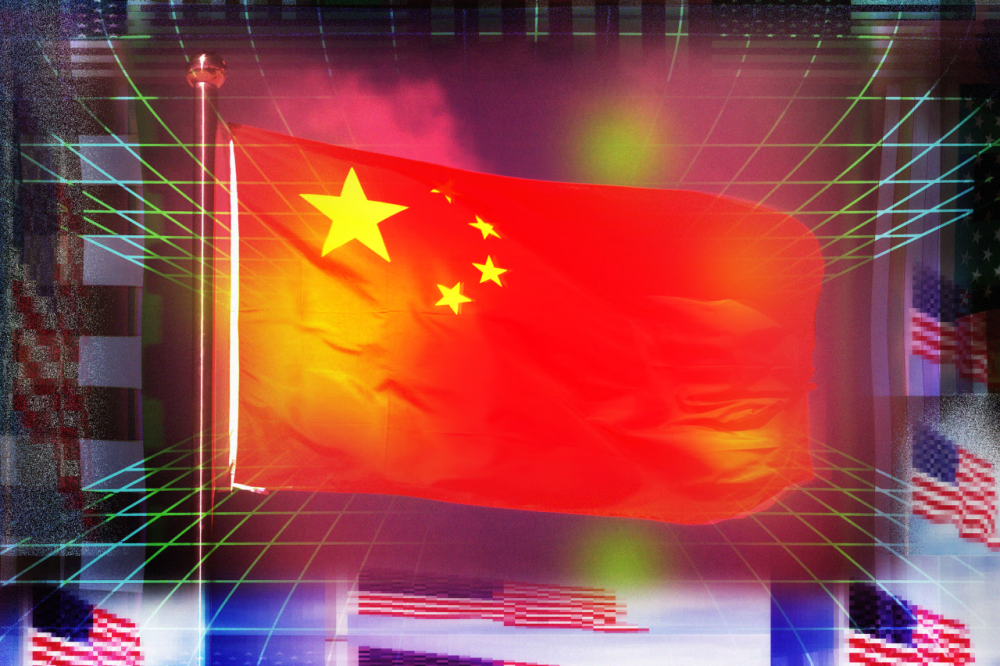
Trung Quốc đang dẫn đầu làn sóng AI nguồn mở toàn cầu khiến Washington và Thung lũng Silicon lo ngại
-
Trung Quốc đang nhanh chóng vươn lên trong cuộc đua AI toàn cầu bằng chiến lược tập trung vào các mô hình AI nguồn mở, có thể tải và tùy chỉnh miễn phí, như DeepSeek, Qwen (Alibaba), Moonshot, Z.ai và MiniMax.
-
Kể từ tháng 1/2025, với sự ra mắt của DeepSeek R1, các mô hình AI nguồn mở Trung Quốc liên tục xuất hiện và ngày càng được cộng đồng toàn cầu đón nhận.
-
Trái lại, các công ty Mỹ, vốn giữ kín mô hình AI, bắt đầu bị áp lực. Đầu tháng 8, OpenAI đã tung ra gpt-oss, mô hình nguồn mở đầu tiên của họ.
-
Chính quyền Trump cũng cảnh báo trong kế hoạch AI rằng mô hình nguồn mở có thể trở thành tiêu chuẩn toàn cầu và kêu gọi phát triển các mô hình dẫn đầu "dựa trên giá trị Mỹ".
-
Dù chưa có doanh thu trực tiếp, các công ty AI có thể khai thác hệ sinh thái dịch vụ ăn theo – tương tự cách Google kiếm tiền từ Android.
-
Trung Quốc khuyến khích mạnh mẽ phát triển AI nguồn mở như một chiến lược "dự phòng" trong trường hợp bị cắt khỏi công nghệ Mỹ – bao gồm hệ điều hành, vi xử lý và phần mềm kỹ thuật.
-
Theo công ty phân tích Artificial Analysis, Qwen3 của Alibaba vượt gpt-oss của OpenAI về hiệu suất tổng thể, nhưng tiêu tốn tài nguyên hơn do kích thước mô hình gần gấp đôi.
-
Các doanh nghiệp châu Á ưa chuộng mô hình Trung Quốc vì hiểu tốt hơn ngôn ngữ và sắc thái văn hóa địa phương.
-
Ví dụ: Ngân hàng OCBC (Singapore) đang dùng cùng lúc khoảng 10 mô hình AI nguồn mở, bao gồm cả Qwen và DeepSeek.
-
Kỹ sư Shinichi Usami (Nhật Bản) chọn Qwen để phát triển chatbot vì xử lý ngôn ngữ "lịch sự và tinh tế hơn" so với mô hình Mỹ.
-
-
Cuộc cạnh tranh gay gắt giữa các công ty AI Trung Quốc đang chuyển từ mô hình đóng sang nguồn mở, với mục tiêu chiếm lĩnh người dùng thay vì doanh thu ngay lập tức.
-
Amazon Web Services đánh giá gpt-oss tiết kiệm chi phí hơn khi chạy trên hạ tầng của họ, nhưng DeepSeek và Qwen lại được đánh giá cao về xử lý ngôn ngữ khu vực.
-
Trung Quốc cũng thúc đẩy hợp tác quốc tế về AI nguồn mở, xem đây là công cụ địa chính trị mới để xây dựng "chuỗi bạn bè" toàn cầu và thu hẹp khoảng cách số.
📌 Trung Quốc đang thay đổi cục diện AI toàn cầu bằng làn sóng mô hình nguồn mở như Qwen và DeepSeek, khiến Mỹ lo ngại về mất vị thế chiến lược. Với 60% bằng sáng chế AI toàn cầu và khả năng xử lý ngôn ngữ khu vực vượt trội, Trung Quốc đặt mục tiêu biến AI nguồn mở thành tiêu chuẩn mới. Trung Quốc cũng thúc đẩy hợp tác quốc tế về AI nguồn mở, xem đây là công cụ địa chính trị mới để xây dựng "chuỗi bạn bè" toàn cầu và thu hẹp khoảng cách số.
https://www.wsj.com/tech/ai/chinas-lead-in-open-source-ai-jolts-washington-and-silicon-valley-ffdec83b
China’s Lead in Open-Source AI Jolts Washington and Silicon Valley
Free-to-use models from DeepSeek, Alibaba and others gain users worldwide
By
Raffaele Huang
Aug. 12, 2025 11:00 pm ET
Alexandra Citrin-Safadi/WSJ
China’s ambition to turn its open-source artificial-intelligence models into a global standard has jolted American companies and policymakers, who fear U.S. models could be eclipsed and are mobilizing their responses to the threat.
Chinese advances in AI have come one after another this year, starting with the widely heralded DeepSeek and its R1 reasoning model in January. This was followed by Alibaba’s Qwen and a flurry of others since July, with names such as Moonshot, Z.ai and MiniMax.
The models all have versions that are free for users to download and modify. This approach, commonly referred to as open source or open weight, is driving global adoption of Chinese AI technology.
American companies that have kept their models proprietary are feeling the pressure. In early August, ChatGPT maker OpenAI released its first open-source model, called gpt-oss.
The history of technology offers many examples where a welter of competitors in an industry’s infancy eventually evolved into a monopoly or oligopoly of a few players. Microsoft’s Windows operating system for desktops, Google’s search engine, and the iOS and Android operating systems for smartphones are just a few of the examples.
History also teaches that the battle to become an industry standard isn’t necessarily won by the most technologically advanced player. Easy availability and flexibility play a role, which is why China’s advances in open-source AI worry many in Washington and Silicon Valley.
In an AI action plan released in July, the Trump administration said open-source models “could become global standards in some areas of business and in academic research.” The report called on the U.S. to build “leading open models founded on American values.”
President Trump displayed a signed executive order related to his Artificial Intelligence Action Plan last month.
For now, the rewards to the winners in open-source AI are slim, since they spend hundreds of millions of dollars developing models and get paid nothing directly in return. But those who lock in users may be able to sell other services piggybacking on the free part, just as Google offers search, YouTube and other revenue-generating products bundled with its Android operating system.
Android is itself open source and built on Linux, an open-source operating system still widely used in the industry.
Researchers have long embraced open source as a way of accelerating the development of emerging technology, since it allows every user to see the code and suggest improvements. Chinese officials have encouraged open-source research and development not only in AI but also in operating systems, semiconductor architecture and engineering software.
“Fearing being cut off from American technologies, China is fostering open-source projects as a strategic fallback and emergency resource,” said Lian Jye Su, an analyst at research firm Omdia focusing on AI.
This year’s U.S.-China trade war has shown how each side can leverage its industrial advantages—such as Nvidia chips for the U.S. and rare-earth minerals for China—to extract concessions from the other side. U.S. officials worry that if Chinese AI models dominate the globe, Beijing will figure out a way to exploit it for geopolitical advantage.
Away from politics, open-source AI models are vying for adoption by businesses. Many customers like open-source AI because they can freely adapt it and put it on their computer systems, keeping sensitive information in-house.
Singapore-based Oversea-Chinese Banking, one of Southeast Asia’s biggest banks, has developed around 30 internal tools using open-source models, including Google’s Gemma to summarize documents, Qwen to help write computer code and DeepSeek to analyze market trends.
The bank said it avoided being locked into any one model. It monitors new releases and can switch if it likes a new model. It also prefers models that many developers are familiar with, so it can get technical support.
“At any point in time, we probably have a stable of about 10 open-source models that we’re using,” said Donald MacDonald, an executive at OCBC.
The overall performance of China’s best open-weight model has surpassed the American open-source champion since November, according to research firm Artificial Analysis. The firm, which rates the ability of models in math, coding and other areas, found a version of Alibaba’s Qwen3 beat OpenAI’s gpt-oss.
However, the Chinese model is almost twice as big as OpenAI’s, suggesting that for simpler tasks, Qwen might consume more computing power to do the same job. OpenAI said its open-source model outperformed rivals of similar size on reasoning tasks and delivered strong performance at low cost.
Major U.S. cloud-service providers have started offering gpt-oss to their users. Amazon Web Services said the OpenAI model was more cost-effective than DeepSeek’s R1 running on its infrastructure.
WSJ explains in a video from May how China is catching up in the global AI race. Photo Illustration: Ryan Trefes/James Park/Bloomberg
Engineers, especially those in Asia, said they found Chinese models were often more sophisticated in understanding their local languages and catching cultural nuances. Models from China are trained with more data in Chinese, which shares similarities with some other Asian languages.
Shinichi Usami, an engineer in Yokohama, Japan, recently developed a customer-service chatbot for a retail client. He chose Alibaba’s Qwen.
With a leading U.S. model, he said, “we’ve observed instances where the chatbot struggles to grasp the implicit intent from users’ words and the responses can occasionally be not polite enough,” said Usami. “Qwen appears to handle these nuances better.”
Companies in China’s hypercompetitive AI industry at first focused on undercutting each other’s prices for closed-source models. That competition has extended in recent months to open-source models as everyone fights for adoption and public recognition.
“Chinese companies often prioritize user stickiness over immediate revenue,” said Charlie Chai, a Shanghai-based tech analyst at 86Research.
While startups have a window to attract users, it won’t last long, analysts said, and larger tech companies are often best-positioned to cash in on a big user base by offering related services such as specialized apps or cloud services.
“This Darwinian life-or-death struggle will lead to the demise of many of the existing players, but the intense competition breeds strong companies,” wrote Andrew Ng, head of Silicon Valley startup DeepLearning.AI, in a recent blog.
Thảo luận
Follow Us
Tin phổ biến



